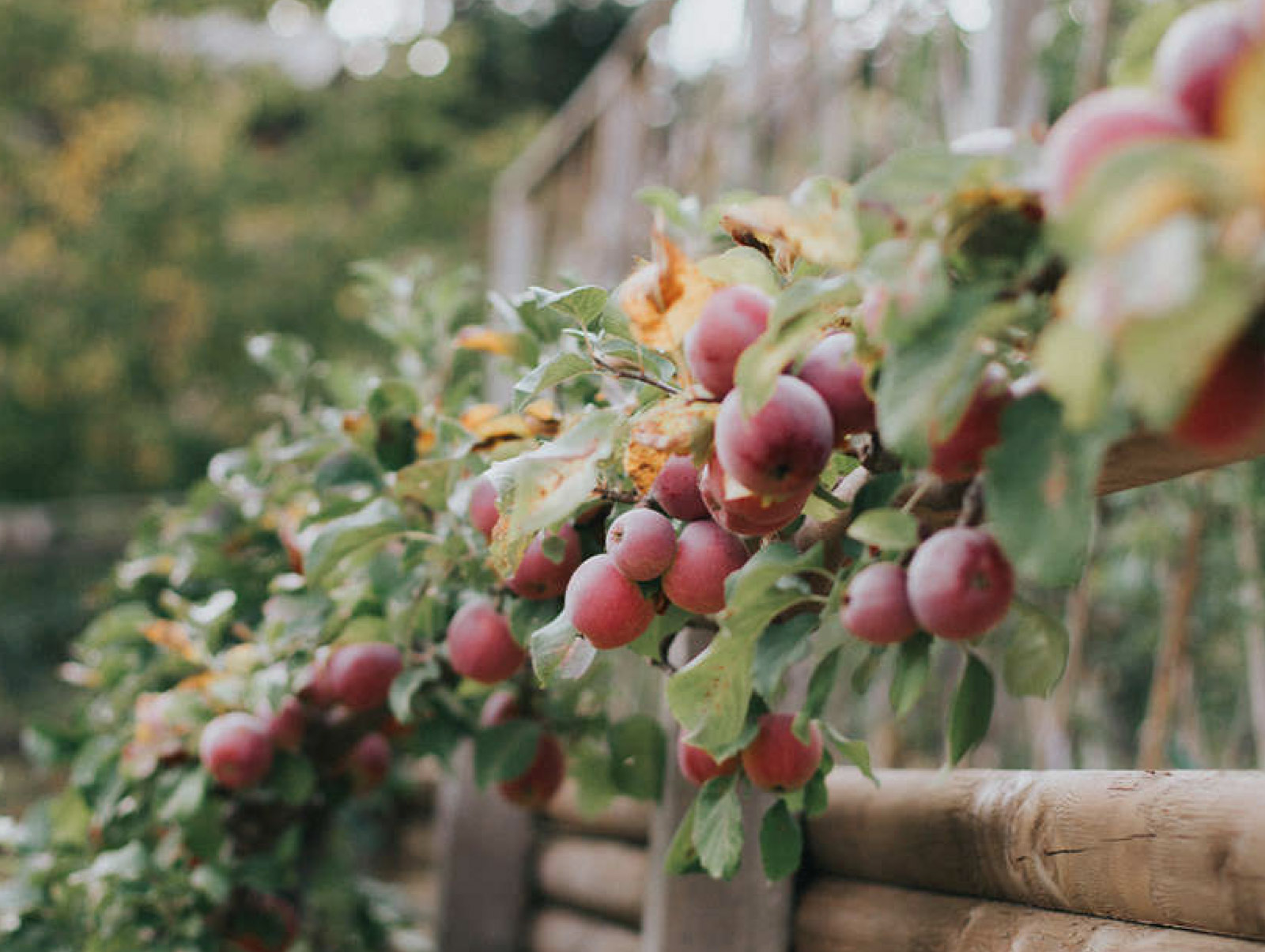The bus was bumping along the North Shore from Horseshoe Bay toward downtown Vancouver one January day in 1992 when John Riley, an accountant on his way from Bowen Island, noticed an unusual apple. It was enormous, weighing almost a pound, with mottled red skin fading into a ruddy golden crown near the stem. Unable to control his curiosity, Riley got up from his seat near the back of the bus, made his way forward, and approached the man from whose lunch box the gargantuan fruit had emerged.
“Sorry, that apple you’ve got there, what on earth is it?”
“I don’t know,” the man replied cheerfully. “But it tastes good!”
Riley did learn something, though. The apple had also come from Bowen Island, near Cowan Point, where in the early 20th century, the retired member of parliament George Henry Cowan had cultivated 12 acres of farmland, including an apple orchard. The farm had since become a golf course, but an apple tree remained. Riley carefully removed a cutting and grafted it to rootstock to grow.
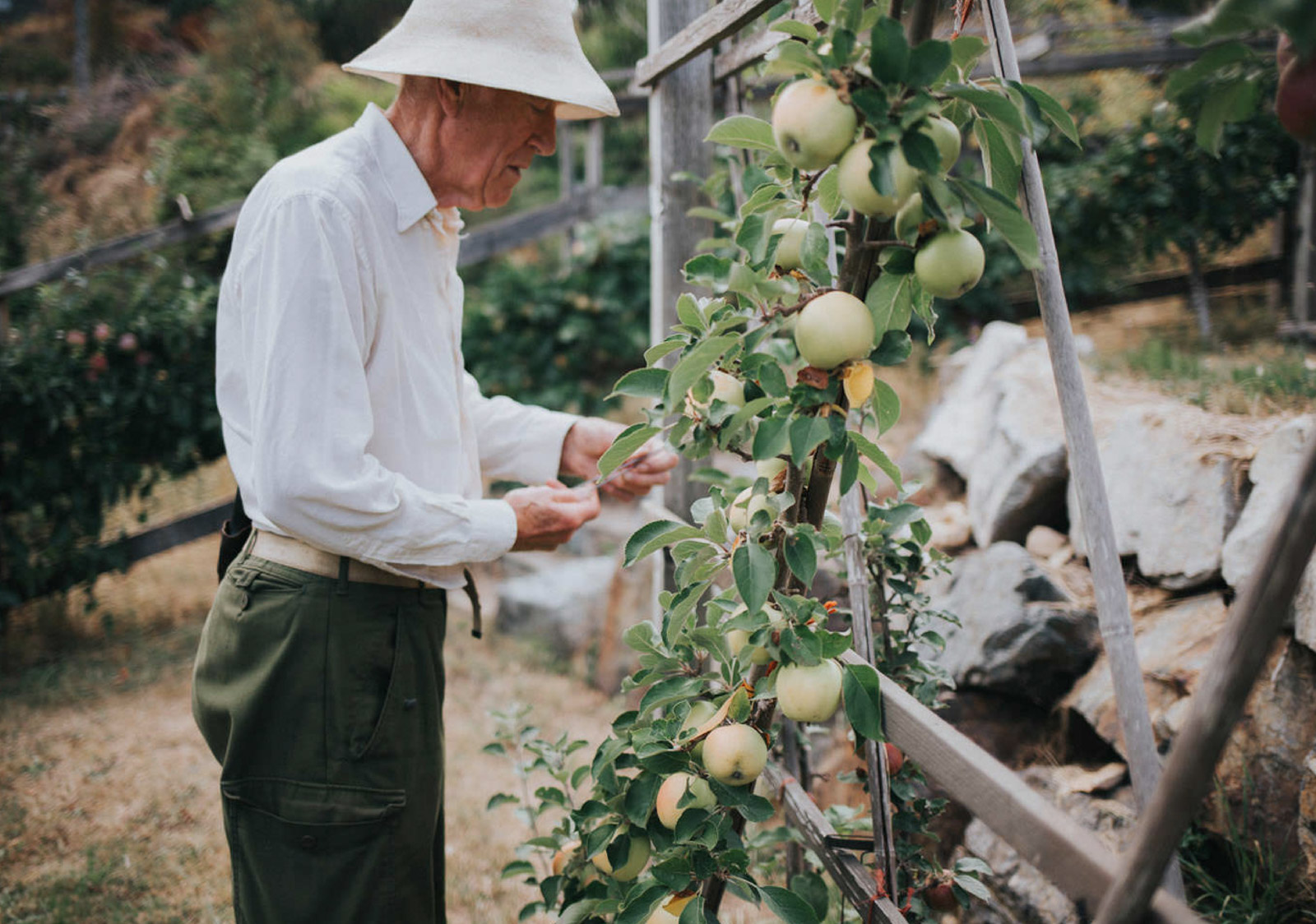
That autumn, Riley brought a sample of the fruit to the apple festival at the University of British Columbia, where he, his wife Josephine, and other apple enthusiasts pored over the identifying markers by which the thousands of known varieties of apple can be differentiated. The unusual size of the fruit helped them narrow to only four possibilities, and further observation of the tree landed Riley on just one. He took the sapling home to his orchard on the sunny south face of Mount Gardner and planted it by the wall with a tiny placard bearing its name: Wolf River.
John and Josephine Riley’s apple collection on Bowen Island is among the largest in North America, surpassed in Canada only by the collection tended by Dalhousie University in Kentville, Nova Scotia. The Riley orchard contains nearly a thousand varieties—though to call it an orchard conjures a false image. The Riley collection is more like a library, the apples planted in dense diagonal criss-crossing hedges called cordons, the trunks only two feet apart, held up by wooden frames resembling shelves of books. And like a great library, the orchard induces a sense of vertiginous awe: row upon row of apple trees, each unfolding a story, aroma, and flavour as distinct and complex as the Wolf River. The names are as fantastical as the colours and shapes of the fruit: Twistbody Jersey, Muscadet de Dieppe, Roxbury Russet, Tower of Glamis, Emerald Spire.
Hardie presses a cider blended from some 500 varieties of apples in the collection—a liquid that could be produced nowhere else in the world.
Now in his 80s and living in the Comox Valley, John Riley speaks slowly and hesitantly, but like many who struggle with language in old age, his earliest words come easiest, and the names of apples—taught to him by his mother in their small orchard in Essex, England—flow off his tongue: Laxton’s Superb, Worcester Pearmain, Bramley.
Bramley, a tart cooking apple, was the first variety he planted in the orchard, more than three decades ago. What was a hobby—a few apple trees bought from nurseries on Saltspring and Cortes islands—cascaded into an obsession.
“We came home with 30 trees one day, and I said, ‘What are we going to do with them?’” Josephine says, laughing. “We got to 50 trees, and then 100 trees, and then all of a sudden there were 200 trees. And I thought, ‘What the heck are we doing?’ It was a lot of work, but it was very fun to do. And we just kept going.”
Apples are an ancient obsession—a tree so essential that the words in both English and French once simply meant fruit. “It was not only the apple’s versatility and prolific seeding that made it follow man’s steps over the earth,” Fred Lape writes in his foundational work of pomology Apples and Man. “More than any other fruit except the grape, the apple endeared itself to men from the beginning. The beauty and fragrance of its blossoms, the beauty of its fruit, and the fragrance and taste of its fruit all moved their way into the folklore, the sayings, and the speech of all groups who cultivated it.” Most of all, he writes, it is the depth and complexity of the apple’s gene pool that makes it so valuable. The tree’s boundless variety allows it to adapt wherever it goes, from Mexico to Finland, as long as its full genetic diversity is allowed to blossom.
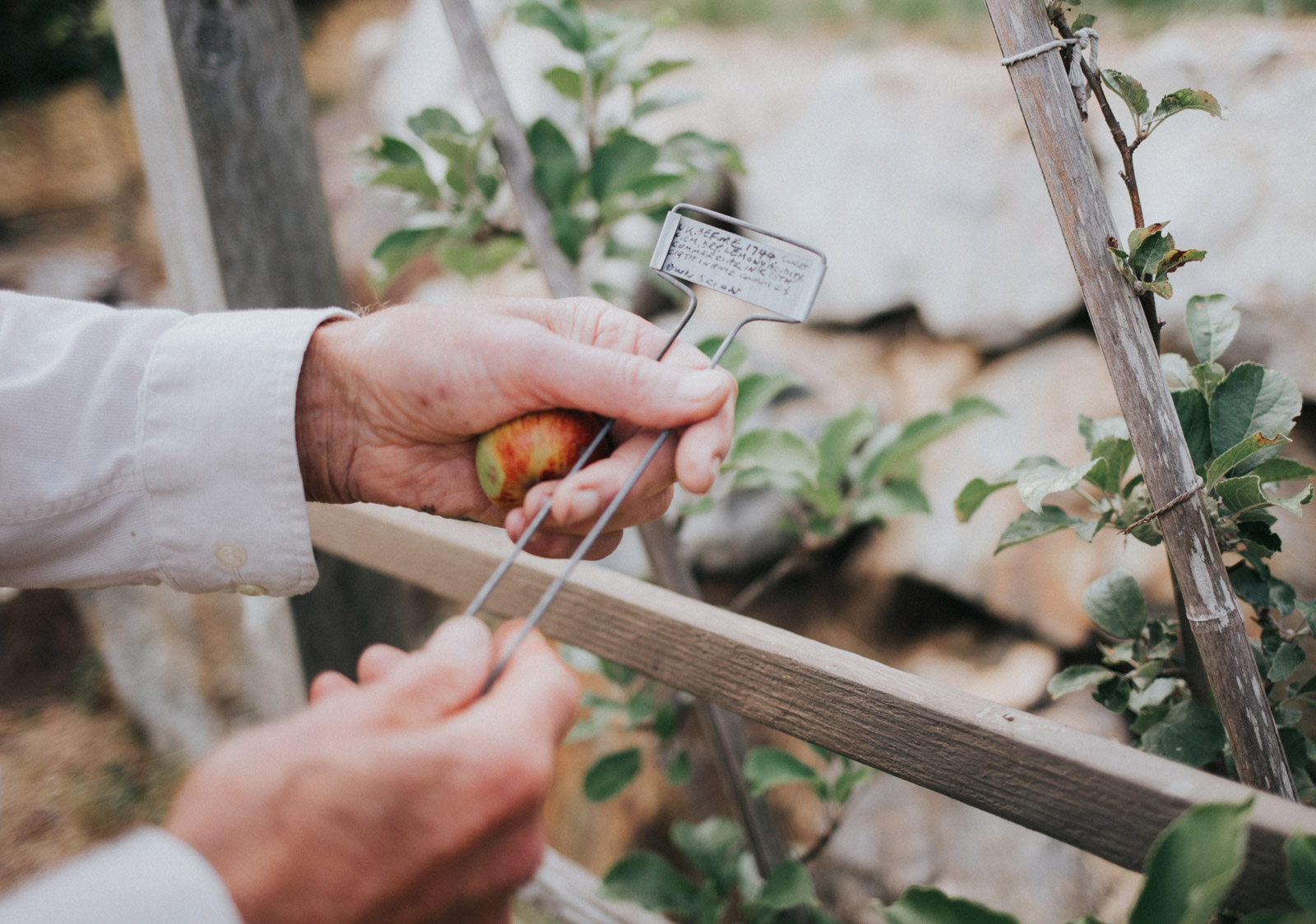
In 2019, the orchard became too much for the Rileys, and it passed into new hands, bought by a young couple who had initially arrived to help and then became ensnared by its allure. On a hot July day, one of the new curators, cidermaker Christine Hardie, walks through the five-acre plot, past a jungle of tangled rhododendrons, cascading raspberries and grapevines, tufted hazelnut, and oversized puffs of bee-humming lavender to the rows of apple trees. Hardie and her husband, Rob Purdy, have transformed it from a storehouse of apple varieties to a working cidery, with a tasting room and gleaming steel fermentation tanks built into a refurbished tractor shed. Each autumn, Hardie presses a cider blended from some 500 varieties of apples in the collection—a liquid that could be produced nowhere else in the world.
To preserve the genetic lineage of an apple, trees must be grown not from seed but from a cutting, called a scion, grafted onto rootstock. Seed-grown trees blend the genetics of the parents and produce a novel apple. The scion wood of desirable trees is passed from orchardist to orchardist, from generation to generation. The Rileys gathered their scion wood from orchards in the Pacific Northwest, including Oregon and the Gulf Islands, where other apple collectors shared cuttings from their own orchards, and received scions through the mail from as far away as England, Tasmania, and Greece. Nearly all the trees in the collection were grown from scions, the country of origin, orchard, characteristics, and year they were planted recorded by John Riley with the meticulousness of the accountant he once was. Only a few renegade trees have sprung up where a fertilized apple rolled and fell naturally into the earth, the mysterious illegitimate love children of a thousand possible parents.
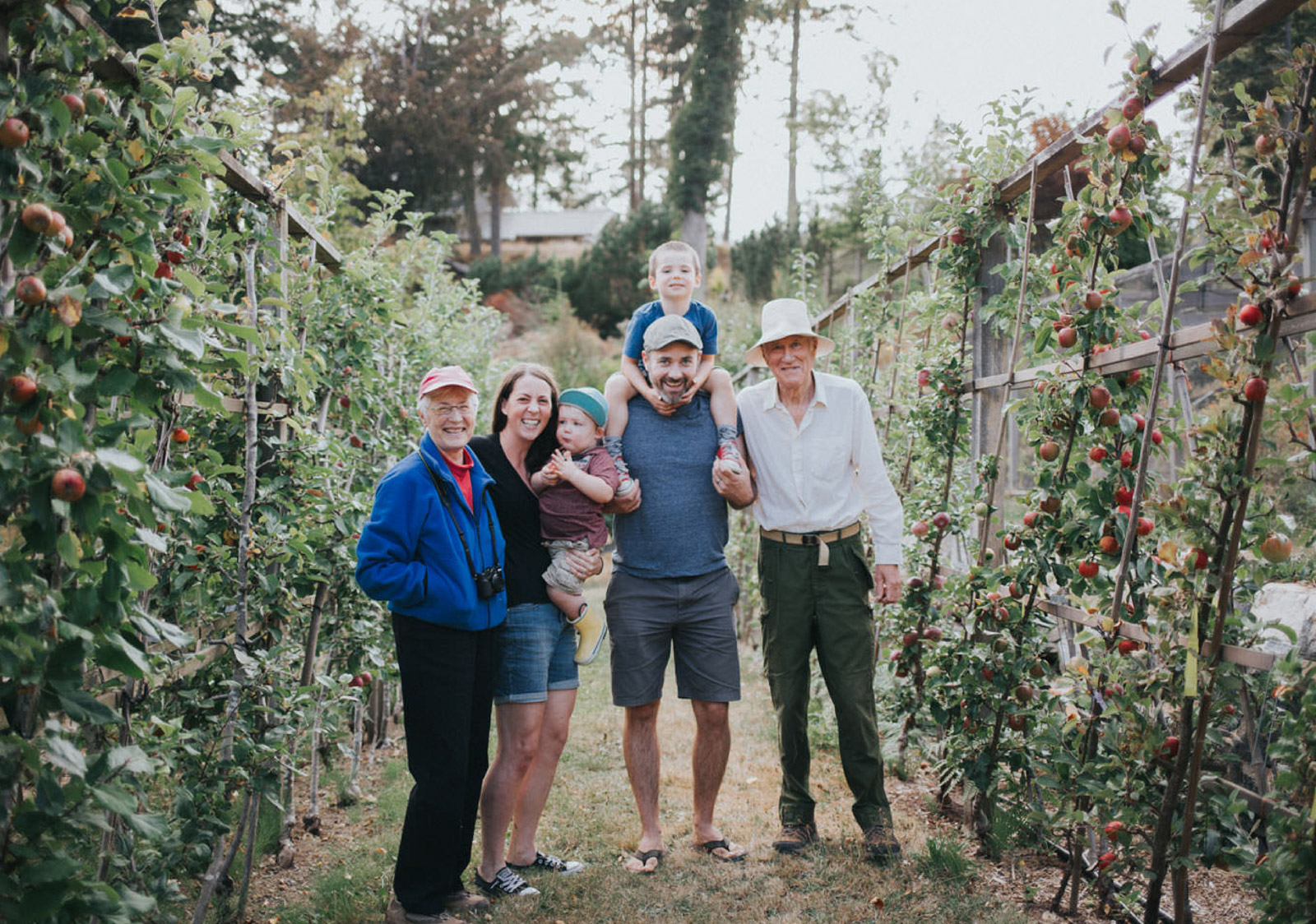
Cidermaker Christine Hardie and her husband, Rob Purdy, took over care of the Bowen Island apple orchard from John and Josephine Riley, who collected nearly 1,000 varieties.
To Hardie, the Riley orchard is a living repository of genetic knowledge that gives up its secrets slowly with the seasons. Cultivating hundreds of apple varieties lets her watch which trees thrive in the Pacific climate and learn what secrets of flavour, hardiness, and disease resistance may be tucked into each genome.
“I think there’s value in preserving them,” she says. “From a commercial perspective, it doesn’t make any sense. But as the climate is changing, there’s something important about it. Some of these varieties have been grafted for centuries, and they were obviously valuable to someone for some reason.”
Hardie fell in love with traditional dry ciders while working as a nurse in the U.K. and returned for a crash course in the craft with English cider authority Peter Mitchell. Since opening Riley’s Cidery, a single-variety cider she pressed with McIntosh apples from a partner orchard in the Similkameen has won a gold medal for modern cider at the International Cider Awards in 2021 and a bronze the following year at the Portland International Cider Cup in Oregon. The Similkameen apples, which supplement the small quantity of juice that can be pressed from the Riley orchard, are themselves a holdout from an earlier time: the 200-year-old McIntosh has in recent decades been mostly supplanted by newer apples grown on super-efficient rootstock that can bring popular varieties to market in only a few years.
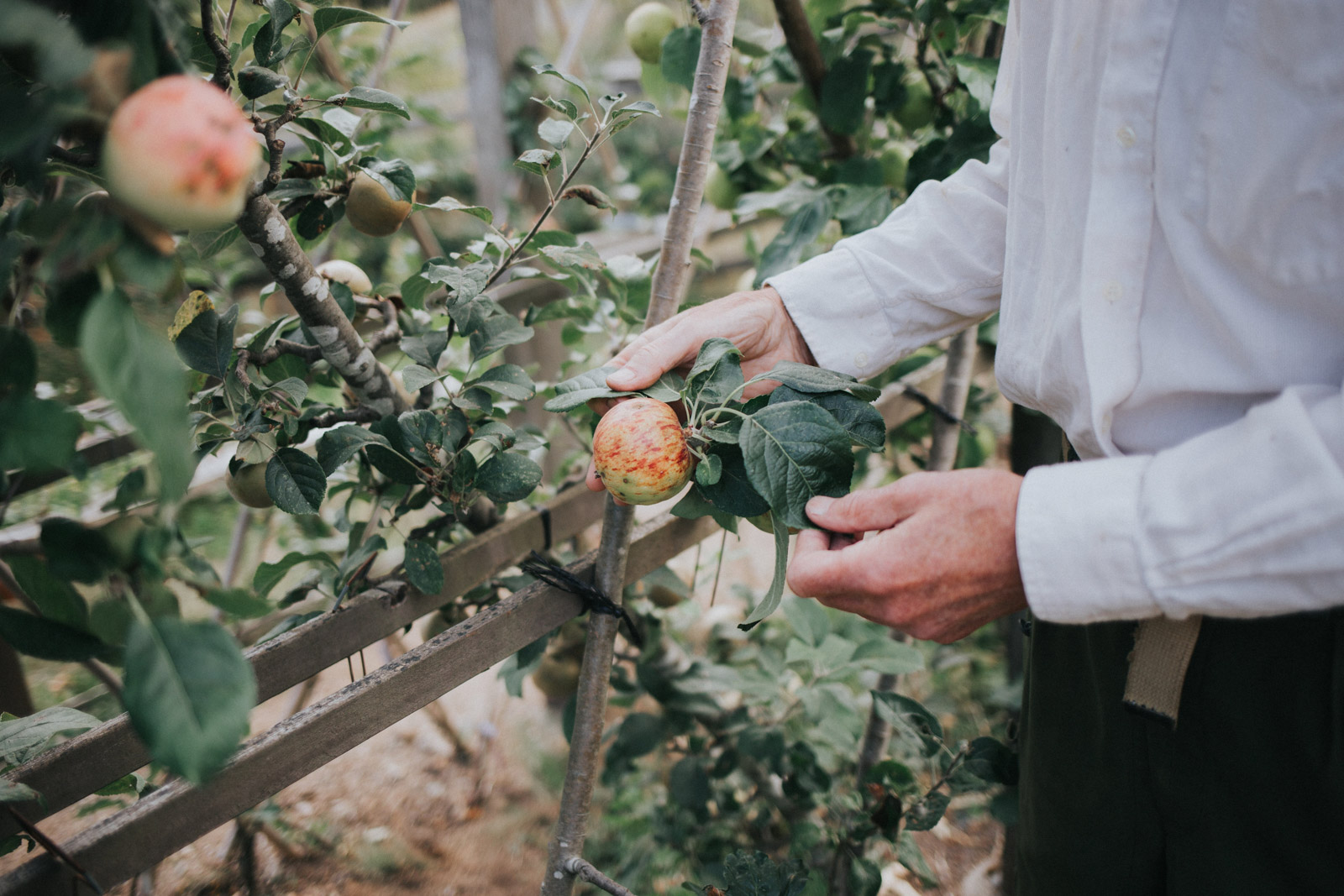
But it is Hardie’s yearly mixed-apple cider, Long Lost Apples, that lingers in the memory. Tart, aromatic, and complex beyond category or description, the cider is a tribute to the thousands of apple varieties that may grow in only one orchard in the world or that have since disappeared forever.
There are two books in the Riley’s Cidery tasting room for guests to flip through as they drink. The first is a three-ring binder filled with printouts of John Riley’s meticulous records, listed alphabetically from Abondance (a French cider apple, collected from organic farmer Charlie Eagle on Saltspring Island) to Zabergau Reinette (a rich-flavoured German russet, collected at the University of British Columbia from Vancouver Island orchardist Bob Duncan). The second book is the weighty, seven-volume green cloth-bound tome The Illustrated History of Apples in the United States and Canada, another work of meticulous obsession that was started and completed—coincidentally—during almost exactly the same 30-year span as the Rileys’ collection. This book, illustrated with lovingly rendered watercolour plates, documents more than 16,000 varieties of apple that have been cultivated across the continent. As author Dan Bussey writes, about four-fifths of these apples have since disappeared forever, pushed out of the way by fast-growing monocultures of newer, popular apples such as Gala and Honeycrisp.
This will not be the fate of the Riley apples. In a project started last fall, scions from the entire Riley collection will be transported from Bowen to a half-acre plot east of UBC Botanical Garden for study and preservation. Looking over her trees, Hardie tells me it will be a weight off her shoulders. She smiles. “Maybe then I won’t feel such responsibility.” 

